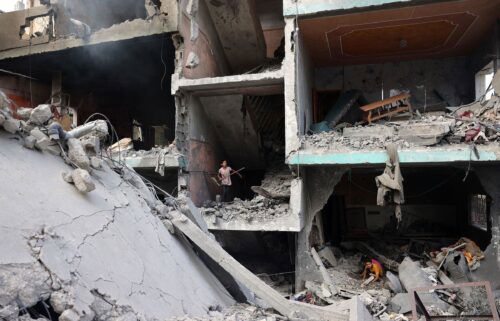North Korea fires two ballistic missiles, senior US official says
North Korea launched two ballistic missiles on Thursday, a senior US official told CNN citing an intelligence assessment — the second such launch in less than a week.
It is not known yet whether the missiles were short, medium or long range, such as an intercontinental ballistic missile (ICBM). The US military and intelligence community is still analyzing data from the test launch to determine what kind of missile was fired and how far it went.
The US tracks all North Korean weapons tests through radar and satellites, which are able to detect heat signatures of a missile launch almost immediately.
South Korea’s Joint Chiefs of Staff told reporters North Korea had launched unidentified projectiles into the sea between the Korean Peninsula and Japan, adding it had stepped up surveillance and was “maintaining readiness in close cooperation with the US.”
Speaking later Thursday, Japanese Prime Minister Yoshihide Suga denounced the launch as a “threat to the peace and security” of Japan and contrary to United Nations resolutions.
A spokesman for the prime minister’s office said the missiles were fired at 7:04 a.m. and 7:23 a.m. local time from North Korea’s east coast, traveling around 430 kilometers (265 miles) eastwards before entering the sea.
“Japan lodges its serious protest and strongly condemns,” Suga said, urging the public to be “fully ready for the contingency situation.”
“It is necessary to enhance monitoring and surveillance more than before,” he added. “I have held an emergency National Security Council meeting. We will work closely together with related nations including the United States and South Korea, and we are determined to protect the people’s lives and peaceful livelihood.”
Earlier, Japan’s Defense Ministry said the projectiles were believed to have landed outside Japanese territory and its exclusive economic zone. Japan’s Coast Guard has warned ships to be on the lookout for falling debris.
The second test in less than a week
Last weekend, North Korea carried out its first weapons test since US President Joe Biden took office, according to three US officials, launching two projectiles in a move senior administration officials downplayed as falling “on the low end of the spectrum” of provocations.
Officials and experts had anticipated that North Korean leader Kim Jong Un would attempt to send a message to the Biden administration about the country’s importance in the region.
In that test, one US official told CNN that North Korea had launched short-range projectiles, possibly artillery or cruise missiles, not ballistic missiles — a key distinction which underscored the Biden administration’s view it was not a serious breach and will not prevent the US from pursuing diplomacy with Pyongyang.
But in a statement to the Senate Armed Forces Committee on March 16, US Air Force General Glen VanHerck warned the isolated regime could go further.
Pyongyang has “indicated that it is no longer bound by the unilateral nuclear and ICBM testing moratorium announced in 2018, suggesting that Kim Jong Un may begin flight testing an improved ICBM design in the near future,” he said.
‘When we practice attacking them, they practice nuking us’
A ballistic missile launch is a violation of UN Security Council resolutions, and “that’s going to make it a little harder for the Biden people,” said Jeffrey Lewis, a professor at the Middlebury Institute of International Studies, which specializes in open-source intelligence.
Lewis, who previously described the weekend’s short-range launches as a “two” out of 10, told CNN on Wednesday evening US time that the new ballistic launches would be “more than a two.”
But the launch wasn’t entirely unexpected, coming days after the US Secretary of State and Defense Secretary visited the region and following a joint US-South Korea military exercise. “When we practice attacking them, they practice nuking us. that’s just the yin and the yang of the thing,” said Lewis.
Though it remains unclear exactly what kind of ballistic missile was launched, Lewis said it seemed unlikely to be the more powerful long-range missile.
“For really long-range missiles, they tended to be picked up when they went up, and they stay aloft for 10-20 minutes. With the ICMBs, we heard about the launch before they came down, and that was a good giveaway,” he said.
“This time, they went up and they came down.”



